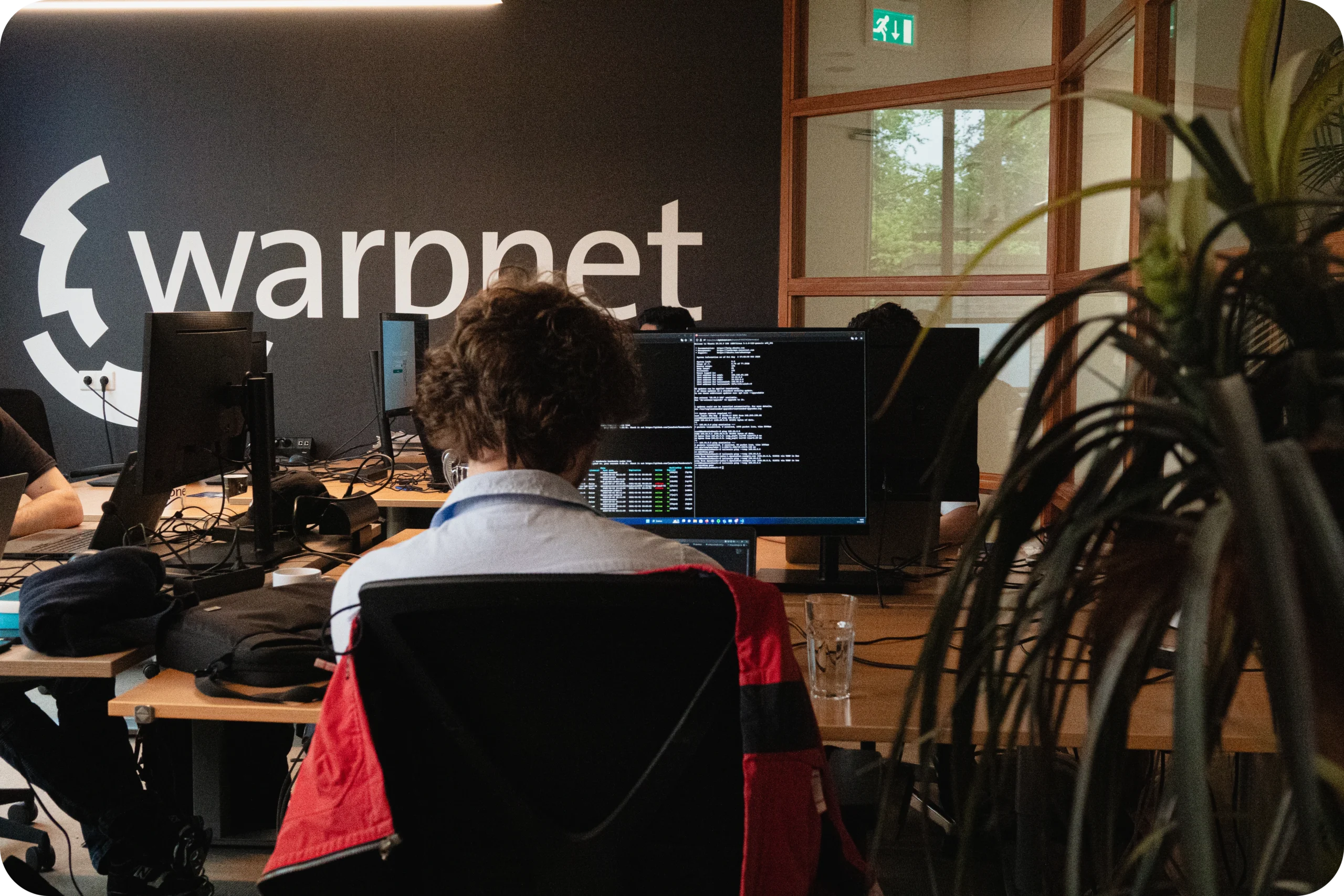Have a pentest performed?
Ontdek kwetsbaarheden in uw netwerken en applicaties – en hoe u ze kunt verhelpen – met een pentest van Warpnet.
Ontdek kwetsbaarheden in uw netwerken en applicaties – en hoe u ze kunt verhelpen – met een pentest van Warpnet.

A standard pen test is usually limited to automatic vulnerability scans and a few exploit attempts. We do not. We deliver impactful insights, uncovering risks that others miss - with a combination of deep technical expertise and broad experience across diverse industries. And our results speak for themselves: no client has ever been hit by a vulnerability we didn't know how to find. Ready for a pen test that leaves nothing to chance?
"I want to know where the weaknesses in our systems are hiding."
"I think our security is working well, but I want more assurance."
"I want to become compliant with a certain legislation/standards framework."

SOME OF OUR CLIENTS






Most cybersecurity parties consider a pentest to be complete as soon as the report is delivered. Warpnet thinks differently - We are not satisfied until your security is demonstrably in order. With this goal in mind, we support you in resolving risks that we capture while performing the test.
With this, Warpnet is the only pentest specialist in the Netherlands that takes an approach that delivers more than just insight. After all, our mission is to ensure that your security is actual resistant to sophisticated attacks. We therefore not only support you from the beginning to the end of the test, but also then.
"We are very happy working with Warpnet. They communicate well and always do more than they should."
- Jerry Seager, Technical Lead | Patchmanager


Security specialisten staan onder constante druk om te bewijzen dat beveiligingsinvesteringen echt werken. Een pentest brengt overzicht en zekerheid: we brengen uw omgeving in kaart, volgen realistische aanvalspaden en presenteren de bevindingen van de test in een helder, bestuursklaar rapport dat spreekt over risico’s in plaats van alleen technische details. Wanneer het bestuur een duidelijk stappenplan ziet — Verkenning & Mapping → Aanvalspogingen → Post-exploitatie — begrijpen zij meteen hoe u beveiligingsincidenten voorkomt, en waarom het goedkeuren van het volgende beveiligingsbudget noodzakelijk is.

De gemiddelde kosten voor herstel en downtime na een datalek in Nederland lopen al snel in de tonnen, maar dat bedrag daalt tot vrijwel nul wanneer risico's worden ontdekt vóórdat kwaadwillenden toeslaan. Door elke pentest aan te pakken als een echte aanvalspoging is — met doelwitten zoals Active Directory, cloud en legacy-systemen — sporen we die ene vergeten credential op die anders een aanvaller vrij spel zou geven. Vergeleken met de impact van een echte inbraak is een proactieve pentest een minimale investering.

Waar geautomatiseerde scanners stoppen bij open poorten, gaan onze testers verder. Onze volledig handmatige aanpak combineert handmatige analyse, privilege-escalatie en ketenaanvallen die standaard checklists over het hoofd zien. Zo brengen we kwetsbaarheden aan het licht die diep verborgen zitten in productieomgevingen — zoals logische fouten in bedrijfsprocessen en misbruikpaden die vaak onopgemerkt blijven. Of het nu gaat om een obscure cross-forest trust in Active Directory of een vergeten serviceaccount in een hybride cloudomgeving, wij vinden de zwakke plekken waar anderen niet eens zouden denken te zoeken.

Verhalen maken meer indruk dan spreadsheets. Daarom bevat elk rapport van Warpnet overtuigend bewijs: screenshots, CLI-opdrachten en stap-voor-stap scenario’s die exact laten zien hoe we een systeem wisten binnen te dringen en wat de gevolgen hadden kunnen zijn. Stakeholders horen niet alleen over risico’s — ze zién ze, voelen de urgentie en krijgen een concreet plan van aanpak. Het resultaat? Een gezamenlijke oproep tot actie binnen IT, compliance en de bestuurskamer: los de bevindingen op, versterk de IT-omgeving en ga met vertrouwen vooruit.

"The team was very helpful and met every deadline. They went beyond expectations by expanding the scope of the test to address unexpected issues-even though they were under no obligation to do so. A truly reliable and pleasant team to work with."
- Marco Vellinga, Senior Backend Engineer

Want to know more about our services?
We would be happy to help you.